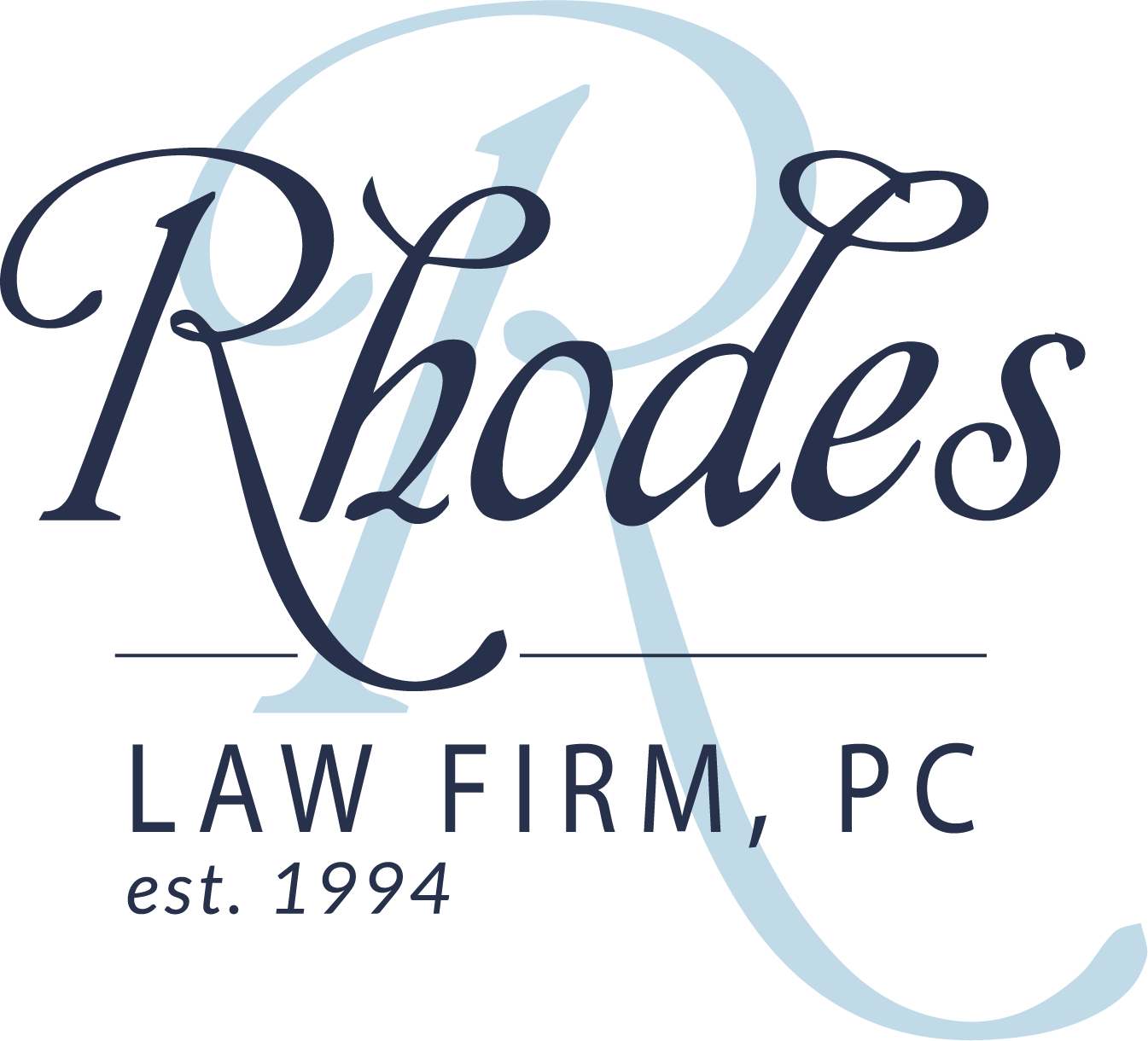Blog
Feb
It is important to review your estate plans regularly to adjust for any changes that occur, whether they are legal or personal. This year, that is especially true. The Setting Every Community Up for Retirement Act, or SECURE Act, has made substantial alterations to how certain retirement benefits and IRAs should be treated after death. This means that you should take the time to review and update your estate plan. This article on Forbes.com highlights some key points regarding these changes and why you should take the time to consider making changes to your plan.
The SECURE Act changes could possibly result in revision of beneficiary designation forms, revision of wills and trusts, possible modifications of existing conduit trusts, and complete restructuring of the planning for the IRA account. One major change that the SECURE Act brings with it is the death of the “Stretch IRA.” With this death, the ramifications will shake things up for many. The stretch technique permitted heirs to defer IRA over a long period of time, which essentially would permit the IRA balance to compound income tax free. Now, however, most heirs of an IRA dating after 2019 will be required to completely withdraw all assets within 10 years of the date of death.
There are a few exceptions to the 10-year rule. For heirs who qualify as “eligible designated beneficiaries” do not need to adhere to the 10-year payout. Those who are considered eligible designated beneficiaries are surviving spouses, chronically ill, or disabled heirs.
The SECURE Act significantly affects many estate and retirement plans, so it is critical to review your plans today. The team of legal experts at Rhodes Law Firm is ready to help ensure that your plan is structurally sound and your wishes will be upheld. Don’t wait until it’s too late – come see us today to review or create your estate and retirement plans!
Dec
Social Security is a truly wonderful program that distributes nearly 64 million benefit checks to more than 15 million retired workers. These monthly payments also benefit the survivors of deceased workers and those on long-term disability. This is a lifeline many cannot afford to lose. However, many might not realize that your Social Security benefit might be taxable.
This article by The Motley Fool has a great article that delves into the history behind the taxation of social security benefits as well as offers more information on whether or not you may be taxed. Social Security taxation, a controversial addition to the Amendments of 1983, was originally aimed to only impact upper-income households in order to avoid cutting benefits for retired workers.
The odds of future retirees’ benefits being taxed is currently at about a 50/50 chance. When the taxation of benefits was put into place, people or couples whose modified adjusted gross income exceeded $25,000 and $32,000 were subject to the tax. In 1993, the second tier of taxation was created, aimed at those whose MAGI were more than $34,000 and $44,000. However, these thresholds have never been adjusted for inflation, and therefore more and more seniors are being subjected to the taxes of Social Security benefits.
This taxation, while unpopular, is a large chunk of what is helping keep Social Security benefits afloat. Social Security is facing an imminent funds shortfall, and the Board of Trustees has anticipated the program’s $2.9 trillion in asset reserves will be depleted completely by 2035.
Read more about the taxation of Social Security benefits here. With Social Security’s wellbeing in flux, it is more important than ever to have a plan for your retirement and later years. Contact us at Rhodes Law Firm today to get started on your future.

Feb
Estate planning is essential to ensuring your assets make it to the right people, yet many people neglect this important step. In fact, 60% of Americans have not yet completed an estate plan.
It’s understandable that people don’t like discussing this subject. People don’t like thinking about their deaths. If you don’t plan though, you can leave plenty of trouble for your loved ones after you’re gone.
Even people that complete an estate plan make mistakes that can cause trouble. These mistakes are easily avoidable though. There are 10 common mistakes you want to watch out for.
What Is Estate Planning?
Estate planning involves protecting your assets for your loved ones. An estate plan includes legal documentation to ensure that your property will get handled the way you want.
Your estate plan leaves full instructions for how your property and other assets get divided between your beneficiaries. These documents include wills, trusts, and charitable gifts.
Estate Planning Mistakes
Estate and trust planning works for everyone, no matter the value of your assets. While the process doesn’t prove complicated in itself, it’s easy to make mistakes if you’re not careful.
You want to make sure you know what you’re doing before you get started with an estate plan. It’s especially important to avoid the most common mistakes.
1. Not Creating an Estate Plan at All
The biggest mistake you can make involves avoiding the estate plan altogether. This mistake occurs for the majority of Americans.
Even celebrities neglect this important process. Notable celebrities such as Aretha Franklin and Prince are known to have died without any type of will in place.
Without a proper plan in place, you leave confusion and complications for those you leave behind. Without clear instructions, people can bicker and fight, or even sell important family heirlooms. The official plan cuts down on these issues.
2. Not Working with a Professional
To save money, many people attempt to complete their estate planning on their own. They wade through the documentation attempting to make sense of it all on their own.
This leaves the estate plan open to missed or wrong information. A professional, such as an estate or tax attorney, can help you make sense of everything involved. They can help you understand all estate and tax laws to ensure you don’t miss anything.
3. Not Paying Attention to the Details
It’s easy to let an estate planner handle all the documents and just sign on the line. This will prove a mistake. You want to check to make sure you understand everything involved.
You also want to ensure there are no mistakes with the completed plan. You want to understand how it works and how to implement the plan. Make sure you ask questions about anything you don’t understand.
4. Failure to Officially Add Assets
When you set up a trust, many assets, such as personal items, are easy to transfer with simple listing. Other items need more official documentation to add them.
- Deeds
- Registrations
- Financial records
These and other items require you to add the trust as an owner to make it official. This ensures the assets can get transferred without issue.
5. Not Understanding Ownership
Personal items are easy to establish ownership with. Other assets, including assets with dual ownership, become trickier when it comes time to transfer ownership.
It’s important to review the ownership of all assets in your name. Make sure you understand how access to these assets works. Update your estate plan if changes to laws or changes to your situation occur.
6. Failure to Understand Retirement Plans
Tax laws can make retirement plans tricky. Many people don’t understand how these tax laws work and end up leaving loved ones paying hefty fees to access the money.
If you add a retirement plan to a trust, you need to understand the tax laws that affect this. You need to word the plan to ensure excess taxes aren’t taken out. You might even consider naming individuals instead of the trust if necessary.
7. Forgetting Gift-Giving
Wills and trusts still get taxed before everything gets transferred completely. People often look at leaving as much as possible without considering how much money their loved-ones lose due to taxes. Giving gifts through the trust can reduce taxes on the estate though.
You can make gifts to individuals for up to $14,000 per year. You can also make gifts to businesses and charities through the trust. Charitable gifts give you the opportunity to reduce taxes while helping others.
8. Ignoring Power of Attorney
Many people forget to add someone to ensure everything gets completed correctly. Ignoring the power of attorney can lead to more confusion.
You need people to act as power of attorney for your estate plan. These people ensure your financial and medical plans get carried out. You also need to make sure this information stays up-to-date and easy to find.
9. Not Updating Beneficiaries
Things happen, and beneficiaries can change. Births, deaths, divorce, a change of mind, all these situations can lead to changes to the people you want to leave assets to.
It’s important to review your documentation and make sure everything stays up-to-date and any changes get made. Make sure your assets get to the right people.
10. Not Taking New Situations Into Consideration
Every major family and life event needs consideration for an estate plan. You might not think of this right away, but you really need to review the plans to ensure nothing gets missed.
When your situation changes, check your plan and make sure life events don’t require changes to the trust. Changes can include assets, property, or even work status.
Finding Help for Estate Planning
If you understand the common estate planning mistakes, it’s easier to ensure your plans get completed correctly. It’s always best to get help from professionals to ensure your assets get divided correctly.
An estate planning attorney can help you manage everything. For more information, contact us to discuss your needs.

Jan
Your Complete Guide to the Different Types of Charitable Trusts Available
Mass Media 0 comments Blog, News
How do you give to charity?
Do you sign up for direct debits, or give cash when asked? Maybe you open up your checkbook a few times a year to give generously to causes close to your heart.
If you give to charity on a regular basis, you might be surprised to learn that your giving could be more effective. A change in the delivery of your donation could send your contributions soaring. You might even continue earning money from your assets and save on taxes at the same time.
Charitable trusts aren’t just for multi-millionaires and billionaires. Planned giving vehicles give anyone with a philanthropic heart, opportunities to make a real difference.
Think your donations wouldn’t be better served by a charitable trust? Think again. Keep reading to see if one of these different types of charitable trusts can maximize your donation.
Charitable Remainder Trust (CRT)
A charitable remainder trust (CRT) provides a mechanism for donors to leave more money to charity and spend less on estate taxes.
CRTs are particularly popular among those who would otherwise face a high capital gains tax bill for a highly appreciated asset.
A CRT allows you to place the asset in the trust. Over the life of the trust, you continue to receive income from it either through annuity payments or percentage payments.
When the trust reaches the end of the term, the asset belongs to the charity named when you set up the vehicle.
In sum, the benefits of a CRT include:
- Continued income from an asset
- Lower estate taxes
- Significantly reduced or eliminated capital gains taxes
- Final donation to charity at the end of the trust
Overall, the tax incentives are the biggest attraction of a CRT, so you’ll want to enlist the help of a tax attorney to set it up.
Charitable Lead Trust (CLT)
Charitable lead trusts (CLTs) allows a person or family to donate assets into the trust before sending the funds on to one or more organizations listed by the donor. Think of them as the opposite of a charitable remainder trust (CRT).
In most cases, a CLT serves as a vehicle to provide donations but to also leave tax-free gifts to the family of the donor. When money goes unallocated at the end of a specified period, the CLT passes on the remaining gift to the donor’s family. Families do not need to pay taxes on the funds, and they do not qualify for annual gift exclusion rates.
Unlike other vehicles, you can’t write donations to the trust off from your taxes unless you own the trust and are the donor. If you meet these requirements, you qualify for one deduction to use only in the year of the creation of the CLT.
Be sure to ask your tax attorney about deductions if they are your primary motivation.
The benefits of a CLT include:
- A reliable stream of income for a charity
- Left-over assets remain tax-free
- Removal of limits on annual gift exclusion
Overall, the most significant benefit of a CLT is reducing the estate taxes dramatically.
Private Foundation
Private foundations are the most recognizable vehicle for charitable donations. A private foundation offers the most control over the assets donated and the most flexibility in the assets donated. It can also exist in perpetuity rather than coming to an end after a set term or the death of the donor.
Private foundations work well for those who wish to direct their wealth and hold specific ideas about where and how the asset should be disbursed. A private trust can offer activities like:
- Grants
- Scholarships
- Direct charitable activities
- International grants and donations
- Charitable programs
Donors find that private foundations provide the most flexibility and opportunity, but they also cost the most to run.
The benefits of setting up a private foundation compared to a CLT or CRT include:
- Consistency
- Double capital gains tax benefits
- Sheltered income
- Expanded giving opportunities
- Direct philanthropy
However, there are also disadvantages to this vehicle. These include:
- Regulatory requirements
- Recordkeeping requirements
- Excise tax
- Ongoing legal and accounting fees
- Lower deductibility
- Less favorability on some capital gains
Still, if you amassed significant wealth early in life and intend to leave a legacy that outlives you, there’s almost no better means than a private foundation.
Pooled Income Trust
A pooled income trust is for those who intend to leave behind an estate but one that’s of lower net worth.
In a pooled income trust, you’ll create a “pool” with several donors and donations to generate a single large trust. Named charities then invest the money and pay out to the donors according to the amount each contributed to the trust.
Most pooled income trusts accept only liquid assets including stocks, mutual funds, and cash. Rarely do trusts of this type take assets like life insurance, fine art, real estate, or restricted securities. However, enough hunting may bear some fruit.
The benefits of a pooled trust include:
- Immediate income-tax deductions
- Limitation of federal estate taxes
- Avoiding probate on the remaining balance of the estate.
These trusts also exist for those who want to extend their retirement income while remaining at home. These pooled trusts pay for necessary monthly bills, and the balance remains with the nonprofit running the trust (or to Medicaid) after the donor passes away.
Finding the Right Types of Charitable Trusts
Charitable giving can benefit your community, country, and even the world – and it can benefit you.
Before cutting a big check or drawing up a will, consider beginning your philanthropic journey today. With different types of charitable trusts available, you’re bound to find one that meets your unique financial situation, your family’s needs and your desire to give back.
Do you want to include charitable planning in your estate planning? Get in touch with charitable giving experts today.
Nov
A special needs trust means that you can have valuable peace of mind that your child will be taken care of after you’re gone. It’s not an easy thing to think about, we know, but it is vital.
We would like to reassure you that setting this up now is a proactive, positive step. It is undeniably an emotional task to undertake, but you may find that it actually eases your concerns about your child’s future.
Setting up a special needs trust is a wonderful way to look after the wellbeing and happiness of your child in the future. Don’t be like the 6 out of 10 Americans who lack a will or estate planning. Read on for how to set up a special needs trust that can support your loved one in the future.
What is a Special Needs Trust?
A special needs trust (or supplemental trust) is a specific type of estate planning. It gives your child with special needs adequate financial provision for the rest of their life. It is particularly important for children who claim government aid or may do so in the future.
The Supplemental Security Income (SSI) and access to Medicaid are needs-based support. If someone owns or has access to assets of $2000 or more, they would become ineligible to receive that support. So if your child were to inherit your property or money upon your death, he or she could lose eligibility.
If you set funds aside with a special needs trust, they can keep their needs-based government support. This means they can maintain access to healthcare via Medicaid — often a significant concern.
Plus they can use the trust money for any extras that they need. This might include:
- Dental or vision care,
- Equipment such as wheelchairs, computers, cellphones
- Additional care or therapies
- Vacations
- Furniture and furnishings
- Recreational and fun activities
The goal of the trust is to enhance the life of the beneficiary, so that will guide how they use the money.
However, they cannot use the trust money for housing or food because that would also make them ineligible for the government programs.
How To Set Up a Special Needs Trust?
Setting up a special needs trust can be a complicated matter, so it is worth seeking professional advice. Specific wording is required to comply with ever-changing government regulations in this area.
If written incorrectly, your provisions could make your child ineligible for other vital financial aid that he or she needs (or might need in the future). So it is important to have this done by a qualified and experienced attorney.
Choosing Your Trustee(s)
A vital part of the process of creating a special needs trust is deciding who should be a trustee. This is the person (or people) who will administer the trust on behalf of your child. It is not the same as someone being the guardian of your child; it relates solely to the administration of the trust.
They play a key role in terms of the financial decisions that affect your child. So you want to choose someone whose judgment you trust. Your trustee’s role is to spend money to enhance your child’s life, whilst also making the trust funds last as long as they can.
It’s important that the trustees keep up to date on SSI and Medicaid law changes, to maintain eligibility. They also need to maintain records and file taxes on behalf of the trust and may need to invest trust funds as well.
Whilst you probably want a family member or friend who your child knows to be a trustee, it’s also worth considering a co-trustee from your law firm. That way you can be confident that your child’s eligibility for government aid is maintained and all legal aspects are taken care of.
Helping the Trustee to Help Your Child
The trustee(s) will work with your child’s guardian in your absence to make the best decisions for your child. You can set up the trust to come into effect after you pass, or you can set it up to operate now. In that case, you would be the current trustee and would name your successor trustee(s) to manage it when you’re gone.
Often people write a letter on behalf of the beneficiary of the trust (your child) to help future trustees understand their needs and preferences. This is especially important if your child is unable to communicate this clearly themselves.
This letter would include their personal, educational and medical history, their living situation, social life, religious beliefs and any other factors that you want the trustee to know. Understanding these factors will help the trustee to make decisions in your child’s best interests.
Interesting Financial Aspects
The trustee cannot give money directly to your child from the trust, but they can purchase items on behalf of your child using trust funds. So if your child needs new hearing aids, the trustee can buy these for them using money from the trust.
Another interesting fact about special needs trusts that you may not know is that anyone can contribute. Trusts are usually set up by parents for children, but actually, other family members or friends can contribute. Indeed, anybody may contribute.
Anything Else I Need to Know?
There are many interesting aspects to this area of the law, making it imperative to get proper advice. For example, did you know that when your child turns 18, you lose the natural right to be their guardian?
That means you wouldn’t be able to make healthcare or life decisions on their behalf after they turn 18!
You can avoid this startling situation by getting guardianship in place via the probate court. A qualified attorney such as ourselves can help you with this – ideally at least 6 months before your child’s 18th birthday.
We would be delighted to speak with you about getting your child safely set up for the future with a special needs trust. Please contact us at (706) 724-0405 for a confidential discussion.
Alternatively, we have several excellent workshops available online that you might find helpful. We invite you to watch them here.

Oct
There are many types of trusts out there. Here are 6 basic types of trust documents that may be used for your estate plan.
Don’t worry. There’s no need to feel intimidated by the estate planning task.
Even if you have zero legal background or know-how when it comes to estate planning, we’ve got your back with this simple guide to each basic type of trust document you can choose from.
The Basics of Trusts
If you’re looking to create an estate plan, get started now as you can create a trust while you are alive and it will survive your death.
You can make up a trust in your will to be formed upon your death.
Basically, a trust is a right in property that is held in a “fiduciary” relationship by one party to benefit another.
For those who may be very new to any legalese here’s a quick breakdown of two important terms to familiarize yourself with before embarking on the task of estate planning:
1. Trustee- An individual or member of a board who is given control or administration powers over a property in a trust. They are legally obliged to administer that property solely for the purposes it was specified for.
2. Beneficiary- The person who benefits from the trust.
6 Types of Trust Documents for Your Estate Plan
While there are several types of trust documents, the two main categories are irrevocable and revocable.
From there, you can delve into more specified types of trust documents as listed below.
1. Gifting Trust (Irrevocable)
Often, these trusts are created to benefit family members, though sometimes unrelated parties may also be listed as beneficiaries.
Simply, a gift in trust, is a separate legal entity created to hold and receive gifts of property. This is another great method for reducing the taxable estate of the person giving the gift, (the donor).
Both the “gift,” and any future value of that property, is excluded from the donor’s taxable estate.
Gifts are given to a trust instead of straight to an individual so that the assets can be protected and distributed evenly as desired to beneficiaries, so they are saved from taxation, and to enable better financial planning.
Having a gifting trust created can speed up annual exclusion gifts to diminish a taxable estate faster.
2. Living Trust (Revocable)
In a living trust, your property is put into a trust during your life to benefit you and then transferred to your chosen beneficiaries upon your death.
The individual in charge of ensuring that transfer of assets is completed correctly is called a successor trustee.
One great benefit of a living trust is that it avoids probate, unlike simply having a will (that does require probate before assets are distributed). This can mean your beneficiaries receive their allotted assets more quickly.
A living trust may also save you money in the long run as your assets will not require time and expense that comes with going through probate. However, when you have your living will created, it does require a bit more than a will.
You must complete separate paperwork for a living trust, as opposed to a will, to transfer stocks, bonds, certificates, and bank accounts to the trust.
Sometimes considered a tax-bypass trust, a living trust is excellent for spouses who want to leave money to their spouse, but limit the amount of federal estate tax their spouse pays when the trust maker dies.
However, when that surviving spouse dies as well, the remaining assets above and over the exempt limit can be taxable to the couple’s children.
This can potentially lead to hundreds of thousands of dollars in taxes laid upon the children as that tax rate can reach as high as 55 percent. Luckily, a tax by-pass trust will prevent this and protect the children from taxation.
3. Asset Protection Trust (Irrevocable)
The main purpose of an asset protection trust is to ensure your possessions and assets are safe from any future creditor attack. It has all the benefits of a Living Trust, but it has the added protection of the assets from creditors INCLUDING long term care expenses. If set up properly, the creator of the trust can qualify for long term care government benefits. To gain protection, there has to be some sort of limitation to access to the assets, which differs for each situation. This trust also needs to be set up several years before the government benefits could apply, so pre-planning is necessary.
Asset protection trusts are usually set up in such a way so that they are irrevocable for a specified number of years, thus inhibiting the trust maker from being a beneficiary.
When the irrevocable number of years pass, the trust maker receives any undistributed assets back if there is no current risk of creditor attack.
4. Charitable Trust (Irrevocable)
A charitable trust ensures benefits to a specific charity or to the general public. Charitable trusts are helpful when tax time rolls around, as they often lower what you could pay for gift or estate taxes.
You can even do a charitable remainder trust. This can be funded during your lifetime and is useful for financial planning and the receipt of certain benefits to the trust maker.
5. A Life Insurance Trust (Irrevocable)
This type of trust is non-amenable and is created for those who are both the beneficiary and owner of one or several life insurance policies.
This basically means when the individual who is insured passes away, the trustee invests the insurance funds and administers the trust to beneficiaries.
If your trust owns insurance for a married individual, the non-insured spouse and any children are typically your beneficiaries.
You may also create the trust in a “second-to-die” method where children become beneficiaries only upon the death of both spouses.
The Life insurance trust is unusually used so that the life insurance proceeds are outside of an individual’s estate for estate tax purposes.
6. Special Needs Trust (Irrevocable)
If you have a loved one with special needs, you probably know that might qualify for certain governmental benefits or assistance.
Creating a trust with this loved one as a beneficiary is potentially tricky if you wish to include them as a beneficiary without hurting the benefits or assistance they receive from the government.
If this is your wish, then create a special needs trust. This is completely legal under the Social Security rules if the beneficiary cannot control the amount or frequency of the trust distributions.
This type of trust is especially useful for parents or guardians of a special needs child to ensure their child continues to receive all needed help and benefits if the parents or guardians pass away.
Start Your Estate Plan Today
Now that you have a basic understanding of the various types of trust documents you can create in your estate planning, get started today by finding an experienced attorney.
Become even more educated on estate planning and will creation by watching our free mini-workshops online.

Aug
Charitable giving amounted to $410.02 billion in 2017 and has steadily increased over the last 40 years. A 2018 study showed charitable giving increased by 4.1% in 2017.
More people are looking for ways to donate, and are seeing great benefits when they do.
Charitable planning is a way to support charities and non-profits that are near and dear to you while receiving tax. You can contribute annually, or periodically over a lifetime.
Take a few minutes to learn how to develop your charitable planning strategies.
Choose a charity
You may donate to a public charity–501c (3)–or a private foundation. If you have an organization in mind already, you should find out about its tax-exempt status.
If it’s a non-profit organization, it will likely be tax-exempt. If it’s a private foundation it might be subject to charitable trust taxation.
There are a few charity types you can donate to and your deductions may differ by the type of organization. Human rights, animals, education, and the environment are just a few types of charities out there.
If you’re unsure of what charity you’d like to give to, there are a few websites available to help you find and research a reputable and deserving organization.
What You Can Donate
You can donate time and things you don’t use anymore.
You might want to consider charitable planning within your estate planning. What items that are usually subject to estate tax could receive further deductions.
Stocks
When you donate appreciated stock, receive a tax incentive and avoid capital gains tax. You’d pay capital gains tax on the stock if you sold it and donated the proceeds.
You can donate shares or the entire stock holding.
Mutual fund shares
If you’ve held the mutual fund for less than a year, you would be able to deduct your original investment amount. Any appreciated value can’t be deducted.
For mutual funds held for longer than a year, you might be able to deduct the full market value from your income taxes.
Short-term mutual finds have a cap of 50% deduction on your adjusted gross income, while long-term mutual funds have a cap of 30%.
However, you can carry any amount that you couldn’t for the current year to the next year for up to five years.
Life Insurance
If you’d like to donate your life insurance to charity, you do it in one of two ways. You can make the receiving organization the beneficiary. It will receive the insurance payout after your death.
You wouldn’t receive a tax deduction for the donation, however, since the contribution wouldn’t happen until after you die.
The second way to donate is to make the charity the policyholder when you’re alive. You could receive up to 50% of your adjusted gross income on the value of your donation and any cash donations to give the charity can be deducted to pay the policy premiums.
Making the charity the policyholder is irrevocable, so you should be sure you won’t want to change your mind later.
Real Estate
Donating real estate can lend benefits to all parties involved. A needy family might get a home or the charity might get a new location. You can donate land (developed and undeveloped) and structures.
When you gift real estate, you avoid capital gains tax and receive immediate tax incentives up to 50% of your adjusted gross income. You can also carry any remaining deductions for five years.
Artwork
When donating artwork, there are a few things to consider.
You should consider the type of organization, the type of property the artwork is (capital gain property or ordinary income property), will the artwork be used in the manner in which it’s gifted, and has it been properly appraised.
Types
Donor-advised funds allow you to donate to a public charity and get an immediate tax deduction. These types of funds can be used like a charitable savings account, where you open a donor-advised fund account and deposit money then recommend grants to charities.
Highly appreciated stocks, bonds, and mutual funds. The full market value of the appreciated stock or mutual fund shares is deducted but you avoid tax on the appreciated gain.
Tax-free from your IRA. When you donate to a non-profit from your IRA, the donation is untaxed.
You can establish a public charitable trust to donate. Charitable trust tax deductions may be spread over five years. The initial donation amount can’t be deducted dollar for dollar.
Benefits
The federal government offers tax incentives to encourage giving to charity. Not only does it benefit the charitable organizations but it benefits the donors as well.
Income Tax
Make the most of your taxable income with charitable planning. You may designate an allotted amount of your taxable income to go to the charity or foundation of your choice.
This can reduce the amount of income tax you will pay during tax season.
Estate Tax
Items you donate to non-profit organizations aren’t considered taxable and are excluded from estate tax.
You can donate as much or a little as you want to charity, so if you wanted to donate your entire estate, you’d pay no estate tax.
Passive Income
Through a charitable remainder trust or a charitable remainder unitrust, you can earn a residual income via charitable planning.
With charitable remainder annuity trusts, you’d receive a fixed annuity amount every year. You can’t make additional contributions to these types of trusts.
Charitable remainder unitrusts pay the donor a fixed percentage based on the balance of the trust assets which are revalued every year. You can make additional contributions to this type of trust.
At the end of the designated lifetime or term, any trust assets that are left go to a charitable remainder beneficiary.
It Feels Good to Give
Studies show that people who are generous are happier and live longer. Not to mention the satisfaction of knowing you’re doing good for someone or something else.
The studies also show that it doesn’t matter the amount you’ve given, the intention and the act produce the same result.
Get Help With Charitable Planning
Planning future donations can be tricky, especially when you’re new to charitable giving.
Visit our blog to learn more about estate planning and charitable planning.
Dec
Around the Web: More Than Just Your Will
Mass Media 0 comments Blog, News
You’ve created your will, and everything is in place. That’s great; you are ahead of the game more than you may realize. However, what if your will isn’t the only document you need to ensure your end-of-life wishes?
Documents to Consider
This article from USA Today suggests that there are other documents you may need to consider having to make any other areas are covered that lead up to what is, essentially, inevitable. Amy Florian, chief executive of Corgenius, provides readers with additional documents to have on hand:
- A living will
- POLST, which stands for “physician orders for life sustaining treatment”
- Having a power of attorney for healthcare/healthcare proxy
- Appoint a durable power of attorney
- DNR/DNI orders
- Diminishing capacity letters
- Organ donor designation
- Life insurance
- A personal property memorandum
- A digital assets memorandum
- A collection of relevant information
To take the burden off the family, Florian recommends to have the necessary documents in one place.
For more information on how to get started, contact us today!
Oct
Why Choose Rhodes Law Firm?
Mass Media 0 comments Blog, News
Wouldn’t you rather have an attorney with exceptional credentials and reputation handle some of your life’s most important documents? We would like to believe so. Here is great news for those on the search: Mr. Audrey C. Rhodes, Jr. is the highest rated estate planning attorney in the Augusta, Georgia area!
Education and Experience
After receiving his Bachelor of the Arts from Augusta College (now Augusta University) in 1974, he went on to study law at the University of Georgia and New York University. As you may know, he and his son Daniel currently practice law in both Georgia (office in Martinez) and South Carolina (office in Aiken).
We recommend you choose the right attorney to handle your estate planning, wills, living trusts, and the like. That’s why you should choose Rhodes Law Firm.
Sep
RLF at the Life After 50 Expo
Mass Media 0 comments Blog, News
On Tuesday, September 26, 2017, Rhodes Law Firm had the pleasure of attending the Life After 50 Expo held at the Legends Club in Augusta. The Expo is a compilation of services, tips, and fun for how to enjoy the second half of your life! There were vendors and speakers there covering topics from health to travel to finances and so forth.
At the Expo
This event was a very exciting opportunity for the firm! We had the chance to meet so many great people, and are beyond excited to help them with their estate planning and other needs. We’ve included photos of Daniel, Kayla and our booth at the event below!
When you’re ready to start planning for life after 50 (and even before!), contact us and we’ll get you started!





